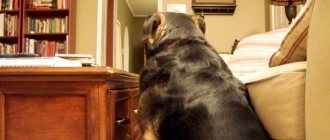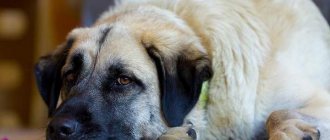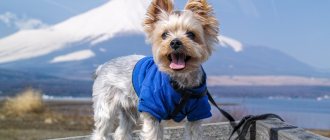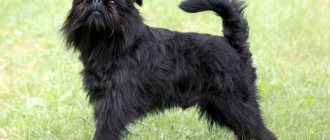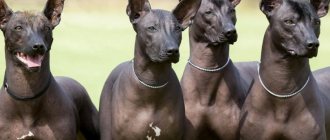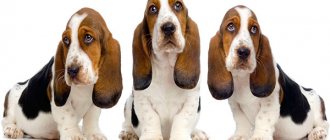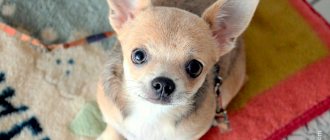Ecology
Too many people want a cutesy little dog to love, so they spend a lot of time and money searching for the perfect dog. A few months after acquiring it, when the novelty effect wears off, they stop paying attention to it, and then the realization comes to them that a dog is a kind of work.
A dog is not a lawn ornament. In addition to meeting the basic needs of water, food and shelter, a dog requires attention, affection, physical activity and mental closeness with its owner. Still, those who want a dog, but are not ready to walk it for half an hour every day, spend time and money on training it, can read the list presented below. With these dogs you will have minimal problems.
Bolonka
© SVM/Getty Images
This breed is believed to be descended from dogs such as the Bichon Frize, originally from Southern Italy. Lapdogs became popular among the royal courts and noble circles of Spain and other parts of Europe as early as the early 1800s. This is a small dog with no particular genetic health problems. The lapdog needs:
Space is minimal.
Well suited for keeping it in an apartment. This “toy” breed has a strong body and weighs 4-6 kg.
Walking is a low need.
The dog is playful, but not very active; long walks are required only from time to time.
Training is a low need.
This dog is smart and trainable, it may not interact well with strangers, however, it gets along easily with children and other animals.
Care is an average need.
This is a long-haired breed with white "curls". It is easy to comb, sheds little and is considered hypoallergenic.
Japanese Chin
© grace/Getty Images
The Japanese Chin is also known as the Japanese Spaniel. In fact, it is believed that the breed originated in China and came to Japan as a gift from the Chinese Emperor. This dog breed was extremely popular among the Japanese royal family, and came to Europe at the beginning of the 19th century. Japanese Chin needs:
Space is small.
This is a small dog, no more than 30 cm tall and weighing from 4 to 6 kg.
Walking is a low need.
This is an intelligent, calm and gentle dog that gets along with almost everyone: strangers, children, other animals. They are also very alert and sensitive to their surroundings.
Training is a low need.
Exercising too intensely can lead to breathing problems. Short walks from time to time will be enough for them.
Care is moderate.
These dogs require regular brushing to maintain good appearance. They shed all year round, but they are very clean and odorless.
Minuses
– They are very difficult to raise during the first four months of life. Other problems are frequent heart disease, back problems, cataracts.
Basset Hound
The Basset Hound breed is famous for its non-conflict and stupidity. Their short legs and large ears delight children. They love to communicate with other animals.
Negative criticism “forced” Maxim Matveev to wish people to be kinder
Brazil postpones approval of Russian Covid vaccine Sputnik V
The forests of the future will be in cities and will help solve the environmental problem
Greyhound
© NathanClifford/Getty Images
You might be surprised to see a greyhound on this list. Yes, they run fast, but they are not high-energy dogs. Throughout history they have often been used for hunting and herding, and were especially popular in Ancient Egypt and Ancient Greece. These dogs need:
Space is small.
This is actually true. Yes, this is a large dog (weighs 30-35 kg, height - about 70 cm), but in reality it can easily live in small spaces. Greyhounds are very quiet and gentle animals, they are even better than those who are smaller in size but more active.
Walking is a low need.
These dogs are very obedient and get along well with strangers, school-aged children and other dogs. You may want to keep an eye on them if they have very young children or small pets around them.
Learning is a low to moderate need.
Yes, greyhounds are sprinters and they love to run, but they don't require much activity. 20 to 30 minutes of even simple walks will help keep your greyhound fit.
Maintenance – low need.
Greyhounds have short, smooth hair, but they have no undercoat. These dogs are also ideal for your home if you suffer from allergies.
Minuses
– some skin diseases and sensitivity to temperature changes.
Bloodhound
A huge dog can weigh up to fifty kilograms. Perhaps due to its impressive dimensions, the Bloodhound exists in energy saving mode. His short, smooth coat does not require much grooming. These talented pups are known for their keen senses and passion for tracking. But they may well limit themselves to searching for a piece of cheese that accidentally fell from the master’s table.
An expert spoke about the dangers of eating grapefruit during coronavirus
They won’t get sick, but they can carry the virus: Murashko spoke about the need for masks
“The main wishes need to be made”: Elena Ilyinykh about family traditions
Bullmastiff
© White_bcgrd / Getty Images Pro
Yes, the Bullmastiff is a very large dog, but nevertheless, the “operating” costs are extremely low. This guard breed originated in the mid-1800s as a cross between an English Mastiff and an Old English Bulldog. They were not designed to attack intruders, but to knock them down and deter them. This is a low energy dog. She need:
Space is small.
Because of her size, you need to have enough space in the house for her to move around and just hang out. However, it is a very calm and reserved dog, so it fits really well in apartments.
Training is a low need.
Some walking exercises are only recommended for very large dogs. This dog is very loyal to its family, it is balanced, calm and tolerant of children. In fact, they crave human attention and are quite affectionate.
Walking is light to moderate.
The Bullmastiff is an extremely calm, low-energy dog, even lazy, and loves to lie down. However, due to her size, she may face the problem of obesity. Not very frequent long walks will be beneficial, and the dogs behave very restrained.
Maintenance – low need.
They have a short and smooth coat that rarely sheds.
Minuses
– they may develop hip dysplasia, vision problems, cannot tolerate extreme temperatures, and often cannot control their saliva flow.
Pug
© kennedyfotos/pixabay
Having appeared in China, pugs were probably “used” as royal gifts, spreading after that to Japan, Tibet, and later making their way to Europe. His needs:
Space is minimal.
A pug can weigh a maximum of about 9 kg, unless of course you overfeed it, and its height is about 30 cm. It is ideal for living in an apartment.
Training is a low need.
Despite their not-so-good-natured appearance, pugs are generally very affectionate dogs that children enjoy. They are also very stubborn. Consider training, if you don't want him to lie on the couch for days, be persistent.
Care is moderate.
There is a drawback. While his coat is very short, he tends to shed heavily. Moreover, you constantly need to clean out its “wrinkles” to avoid irritation or infection.
Walking is a low need.
Due to the unique structure of their heads, Pugs breathe very compactly, meaning if they get any kind of overload, they will have a hard time recovering as they have difficulty controlling their body temperature. They definitely need very slow walks and exposure to moderate temperatures.
Minuses
– they snore and often develop hip dysplasia, breathing problems and encephalitis.
Glen of Imaal Terrier
© CaptureLight/Getty Images
This dog is a type of working dog in Ireland, bred to hunt badgers and foxes. She needs:
Space is minimal.
This terrier weighs up to 35 pounds (approximately 16 kg) and fits well into an apartment environment.
Training is weak to moderate.
An intelligent and very easy to train dog, it gets along easily with other people and children, but can conflict with other dogs. She may also view other pets as toys, so she needs to be taught to treat them with respect.
Walking is a low need.
These terriers have very short legs compared to their body and are not really built for running, jumping or other strenuous activities. Short, infrequent walks will do them good without them asking you to walk them every day. They love to walk in places where there are fences, as these terriers are big fans of “digging.”
Care is low to moderate.
The coat grows by 2-3 cm, if you do not take care of it constantly, it does not shed often.
Irish Wolfhound
These stately greyhounds, bred in Ireland, proudly hold the title of the tallest dog breed. Despite their solid appearance, puppies love to play with children, are graceful and patient.
Rospotrebnadzor: the body is protected from COVID-19 even with a decrease in antibody levels
“We raised you”: what does it mean for an adult child to repay his “debt” to his parents?
Menopause has a negative impact on women's memory: study
Bulldog
© Annette Shaff
The breed was developed in the 1600s to hunt bulls and later became used in dog fighting. When fighting was prohibited, bulldogs with a softer character began to be bred. He needs:
Space is minimal.
A small, muscular dog, weighing 40-50 pounds (approximately 25 kg), is well suited to apartment living, however, it is best not to get one if you have back problems.
Training is a low need.
An affectionate and very loyal dog, he gets along well with people, children and other pets.
Maintenance – low need.
A dog with short hair, however, needs to have the “wrinkles” on its face cleaned regularly.
Walking is not really necessary.
However, these dogs often develop obesity, so short but regular walks will only benefit him. It is worth remembering that hot weather and heavy physical activity can be dangerous to your pet's health.
French Bulldog
Unlike other dog breeds, the French Bulldog is not glamorous or showy, but it is still a beautiful dog. The dog is small in stature, with bat-like ears, but his body is powerful and muscular. The French Bulldog has a short coat, making it easy to care for. Previously, dogs of this breed were rat catchers, but now they are a favorite family pet and exhibitor of dogs who like to relax in a comfortable place.
Training a French Bulldog is easy due to its intelligence. Make training like a game to keep your dog interested. The French Bulldog loves to show his affection to his family, but some kind of socialization and training is required.
Puggle
© PhotographicD/Getty Images
The Poogle is one of the more recently developed breeds and is a cross between a Pug and a Beagle. This is the so-called “designer breed”. Puggles are small dogs, which makes them excellent pets. They need:
Space is minimal.
Poogles are very small dogs that are ideal for apartment living.
Training is a low need.
Poogles are very cheerful and laid-back, they are reliable, playful and affectionate. These dogs get along with everyone, including children and other pets. In addition, they are very loyal and often please their owners.
Walking is a low need.
These dogs really don't have much energy to go on long walks, so casual walks or playing in the yard are the way to go. On the other hand, they get tired quickly. In addition, due to their short nasal cavity (inherited from the pug), long and strenuous walks are contraindicated for them, as they may develop breathing problems.
Care is low to moderate.
They do not require much attention in terms of care, however, in the spring they shed a lot. They may also need wrinkle cleaning, depending on how many pug genes they have inherited.
Minuses
– Due to the short nasal cavity, Puggles are sensitive to heat stroke.
Rat Terrier
© Nicholas Chase/Getty Images
The Rat Terrier is also known as the American Hairless Terrier. Originally bred in England, they became common domestic dogs in the United States in the early 20th century. They need:
Space is minimal.
The upper weight limit of these dogs is 12 kg, height is about 30-35 cm. There is also a miniature rat terrier, whose weight is less than 5 kg and height is 20-25 cm.
Training is a low need.
Rat Terriers are very friendly dogs that get along well with everyone, including cats. They are usually very cheerful, but can be very sensitive to changes in the surrounding atmosphere, for example, a deterioration in the mood of its owner. If you want to teach him something, it will be easy because he is very smart.
Walking is a low need.
They would rather lie on the sofa or lap than run around the yard. However, they will enjoy occasional walks or games in the yard.
Maintenance – low need.
These dogs have a smooth coat that rarely sheds.
English bulldog
The English Bulldog is a fierce-looking dog. Wide, muscular with powerful shoulders, drooping upper lip and strong lower jaw, this gives the dog a fierce appearance. However, it is a playful, friendly, determined and courageous dog. He is a little stubborn, but with a quiet dignity and is ready to protect his family.
The English Bulldog was originally bred as a fighting dog for competition. Fortunately, they became beloved pets rather than fighters over the years. The English Bulldog today wants nothing more than to attract attention and enjoy sleeping next to their owner.
Chihuahua
© liggraphy / pixabay
The Chihuahua is the smallest dog breed in the world, named after the state of the same name in Mexico, where the dog was first discovered in 1850. Its origins are unknown, however, it is believed that the breed is a descendant of the dogs of Chinese or Spanish explorers. She need:
Space is minimal.
Weighing 1-3 kg, and standing up to 9 inches (approx. 23 cm) tall, the dog can fit in your bag.
Training is a low need.
However, if you have children or other pets, then take a closer look at another dog, because Chihuahuas are devoted to one person, so communication with several owners is often tantamount to stress for them.
Maintenance – low need.
Both short and long coats require minimal grooming.
Walking is a low need.
Still, you should sometimes walk with them, because they often suffer from excess weight, which is associated with the development of serious health problems.
Minuses
– Chihuahuas are prone to developing certain genetic disorders, such as epilepsy and seizure disorders, and they often develop problems with the heart and respiratory system.
